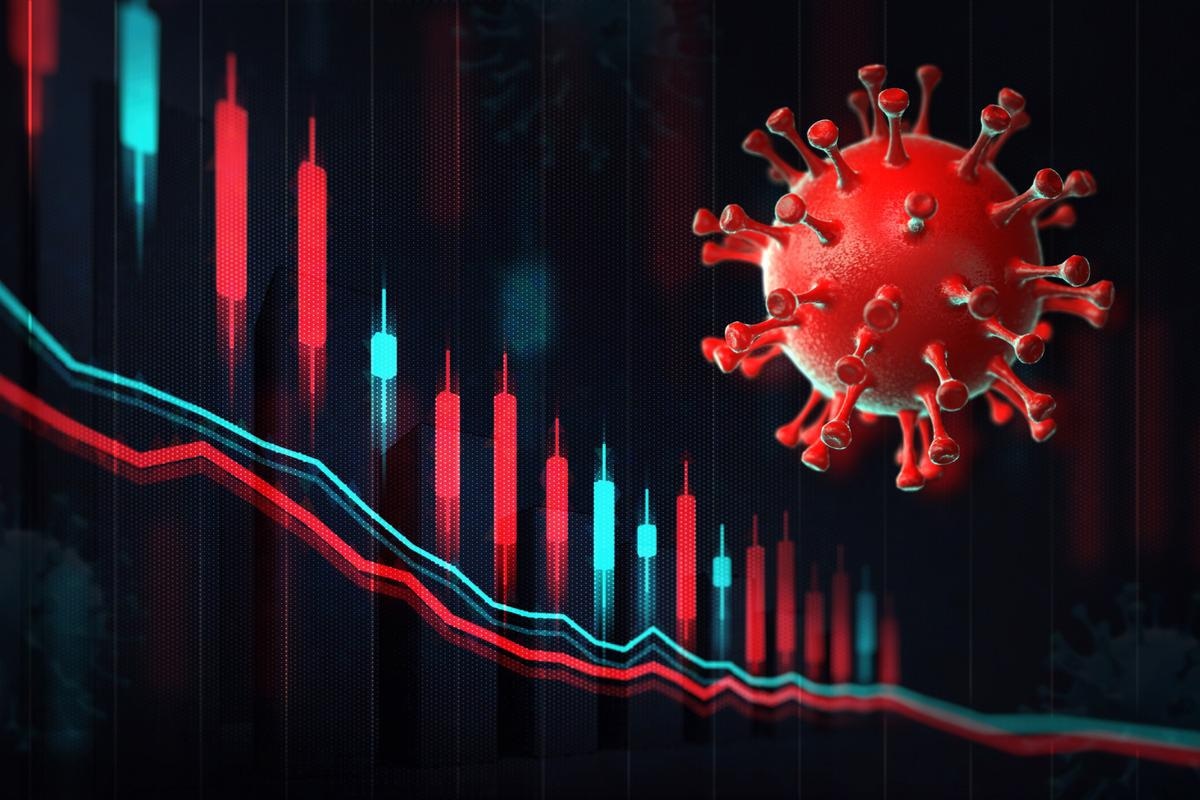In a recent study posted to the medRxiv* preprint server, researchers demonstrated that the combination of infection of remaining susceptible individuals and breakthrough infections of vaccinated individuals promotes infection by invading variants, even at high vaccination rates and relatively weak transmission from vaccinated individuals.
 Study: Vaccine breakthrough and the invasion dynamics of SARS-CoV-2 variants. Image Credit: Adam Vilimek/Shutterstock
Study: Vaccine breakthrough and the invasion dynamics of SARS-CoV-2 variants. Image Credit: Adam Vilimek/Shutterstock
The study results indicated that even high vaccination coverage might not provide complete protection due to the circulation of severe acute respiratory syndrome coronavirus 2 (SARS-CoV-2) variants that can escape vaccine-induced immunity.

 *Important notice: medRxiv publishes preliminary scientific reports that are not peer-reviewed and, therefore, should not be regarded as conclusive, guide clinical practice/health-related behavior, or treated as established information.
*Important notice: medRxiv publishes preliminary scientific reports that are not peer-reviewed and, therefore, should not be regarded as conclusive, guide clinical practice/health-related behavior, or treated as established information.
The potential benefits of vaccines in mitigating and controlling the coronavirus disease 2019 (COVID-19) pandemic are reduced by several factors like heterogeneities in vaccine supply and uptake and biological factors. Although various COVID-19 vaccines provide substantial protection against SARS-CoV-2 infection, breakthrough reinfection of vaccinated individuals by new viral variants poses a great concern.
About the study
The present study illustrated the above-mentioned factors by reference to the simplest, most optimistic case where vaccination and natural infection provide lifelong immunity against SARS-CoV-2 reinfection. A standard SIR (Susceptible-Infected-Recovered) epidemic model was developed to interrupt the transmission in a well-mixed population by immunizing a proportion.
In the equation, pc > 1 − 1 /R0, R0 is the basic reproduction ratio of infection, and pc is the proportion immunized, which will generally be lower than the proportion vaccinated to allow for vaccine efficacy.
Epidemiological models captured the dynamics of imperfect immunity from the SIRS family. The uncertainties about the prevalence and effects of COVID-19 vaccine breakthrough infections are captured by two SIR(S) parameters. The first parameter is the relative susceptibility to breakthrough infection (ε). ε=0 represents a perfect and lifelong transmission-blocking immunity (SIR dynamics), whereas ε=1 represents a complete susceptibility to SARS-CoV-2 reinfection due to the waning of immunity. The second parameter (α) is the relative transmission rate of secondarily infected individuals compared to that following infection of naive susceptibles. Both the parameters combine to modulate the net transmission rate from breakthrough infections.
During the onset of the pandemic, the estimation of ε and α was difficult due to the lack of testing and longitudinal infection data; however, recent studies have addressed these questions. Furthermore, the researchers demonstrated that a higher incidence of infection exaggerates estimates of vaccine effectiveness (VE). Based on recent estimates of the relative transmissibility, α, of the delta strain in vaccinated individuals indicating high transmission, comparable to viral shedding in naive, susceptible individuals, the researchers initially make the pessimistic assumption of α = 1 and explore the impact of lower values.
Using the simple model for the invasion of a new strain into a partially vaccinated population, the researchers explored how the interaction of primary and secondary infection shapes the resulting outbreak. They explored the impact of immunological heterogeneity via polarized vaccine immunity, where some individuals are completely susceptible to breakthrough infections, and the impact of population-level transmission heterogeneities on the results.
We show that a susceptible epidemic can potentiate vaccine breakthrough even when the reproduction ratio for vaccinees is less than unity.”
Results
The study data showed that a susceptible epidemic could potentiate vaccine breakthrough even when the reproduction ratio for vaccines is less than unity. However, transmission from a largely vaccinated population can drive the susceptible epidemic. The findings revealed that this potentiation arises because the reproduction ratio of the invading variant is the sum of transmission in the susceptible and vaccinated classes.
Further, the data illustrated that for a small ε, there would be a small impact of the interacting epidemics. For a higher ε, the effect could be much stronger, especially if the invader has an increased reproduction ratio over current infections. The results highlighted that reducing an invading R0 by non-pharmaceutical interventions or frequent testing is a crucial adjunct to mass vaccination.
Moreover, considering the conservative approach of setting α to unity, the data showed that reducing α mitigates the interaction of breakthrough infections with the overall epidemic. Introducing heterogeneity in transmission into the basic model reduces the impact of the transmission interaction between susceptible and vaccinee subpopulations due to a reduction in average R0.
Conclusion
In conclusion, the vaccine breakthrough and its potential broader consequences can be reduced by administering vaccine boosters. However, without a major investment in equitable global mass vaccination, the likelihood of significant future evolution of transmissive and immunologically elusive new variants cannot be excluded.

 *Important notice: medRxiv publishes preliminary scientific reports that are not peer-reviewed and, therefore, should not be regarded as conclusive, guide clinical practice/health-related behavior, or treated as established information.
*Important notice: medRxiv publishes preliminary scientific reports that are not peer-reviewed and, therefore, should not be regarded as conclusive, guide clinical practice/health-related behavior, or treated as established information.